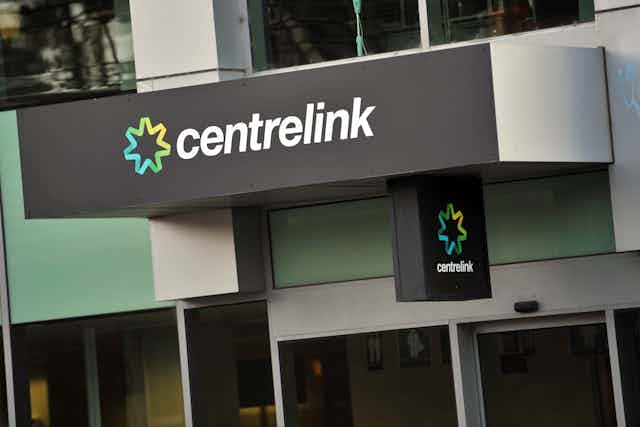The Conversation is fact-checking claims made on Q&A, broadcast Mondays on the ABC at 9:35pm. Thank you to everyone who sent us quotes for checking via Twitter using hashtags #FactCheck and #QandA, on Facebook or by email.
… the level of the unemployment payment, which hasn’t been increased in over two decades… – Cassandra Goldie, Australian Council of Social Service chief executive, speaking on Q&A on Monday May 9, 2016.
As part of her response to Q&A audience member Duncan Storrar’s now famous question about the impact of the 2016-17 budget on low income people, ACOSS chief executive Cassandra Goldie said that the level of unemployment payment hasn’t been increased in Australia in over 20 years.
Is that true?
Then and now
ACOSS CEO Cassandra Goldie told The Conversation that
The base rate of the Newstart Allowance has not been increased in real terms since 1994. It was excluded from the increase to pensions in the 2009 budget, and is indexed to prices only, unlike pensions which are indexed to wages. As a result, the payment is falling further and further behind the pension and community living standards. The Energy Supplement, introduced in 2012, provides an additional A$4.40 a week on top of the base rate but will no longer be paid to new payment recipients, following the recent budget. This decision will further undermine the adequacy of income support for people who are unemployed.
The Keating government provided a discretionary real increase in Newstart in March 1994.
Since that time, Newstart rates have continued to be indexed to the CPI but there have been no specific policy decisions to increase the real level of Newstart payments. (By contrast, rates of pensions were formally indexed to average earnings from 1997).
Government data on historic rates of Newstart payments show that in March 1996, the single rate of Newstart was A$316.70 per fortnight. The rate for a single parent with children was $346.40 per fortnight and the partnered rate was $285.90 per fortnight (each).
Current rates of Newstart show that since March 2016, the single rate is $527.60 per fortnight. The rate for a lone parent is $570.80 per fortnight and the partnered rate is $476.40 per fortnight.
According to Australian Bureau of Statistics (ABS) the Consumer Price Index (CPI) for all groups for Australia increased from 66.2 to 108.2 between March 1996 and March 2016.
Multiplying the March 1996 Newstart rates by 108.2 (the March 2016 CPI) over 66.2 (the March 1996 CPI) gives benefit levels in 1996 in current terms of $517.65 for a single person. It would be $566.20 for a lone parent and $467.10 for a couple.
Appearances can be deceiving
These comparisons make it look, at first, like there have been very small real increases in benefit rates – a boost of between 0.8% and 1.9% over the 20 year period.
However, this is due to what economists call the “indexation lag effect”.
By way of illustration, the March 2016 indexation was based on the CPI change from June to December 2015. When the inflation rate is declining, this means that the Newstart rate appears to rise in real terms – but that’s not a real rise.
Some may say the CPI does not accurately capture the expenditure patterns of low income groups, so let’s test the purchasing power of a Newstart recipient against another index.
Since 2009, the ABS has published a Pensioner and Beneficiary Living Cost Index, but with estimates going back to 1998.
Using this index for “other government transfer recipient households” (which includes Newstart beneficiaries), the real level of Newstart appears to fall by about $10 per fortnight since June 1998, or by about 2%.
The Energy Supplement
There is a further complication. In 2012, the Gillard government introduced separate payments to protect pensioners and beneficiaries from the effect of introducing a price on carbon.
Initially, allowance recipients got up to $218 per year for singles and $390 per year for couples. There was a small amount of “over-compensation” built into this payment. Currently this Energy Supplement for single people on Newstart would just offset the real declines measured using the ABS’s Pensioner and Beneficiary Living Cost Index, putting them about 40 cents a fortnight better off than in 1998.
However, in the 2016-17 budget, the government announced that the Energy Supplement would not be available for new recipients of social security payments from September 2016.
Some policy-watchers have argued that rates of payments for new Newstart applicants will actually be less than if compensation for carbon pricing had never been introduced.
In 2010, the OECD Economic Survey of Australia recommended that the government examine the adequacy of the Newstart allowance and look at options to increase it.
Verdict
Cassandra Goldie was correct if she meant that there have been no legislated changes to real Newstart rates in over 20 years. However, if the Energy Supplement is taken into account, it could be argued that there was a marginal increase in real payment rates (less than one tenth of 1%). – Peter Whiteford
Review
The analysis is generally sound, and comes to the same conclusion that I would come to – that rates of Newstart have not increased substantially in real terms since 1996.
It might be added that over most of the period since 1996, neither Labor nor Coalition governments have been particularly sympathetic to calls to increase Newstart. It has languished, while most other payments have, from time to time, been boosted, either by above-inflation rate increases (for example, the standard rate age pension in 2009), or with one-off “bonuses”.
One such bonus was the Household Stimulus Package introduced by Prime Minister Kevin Rudd in 2009, under which recipients of age and disability pensions, carer payments and Family Tax Benefit all received substantial amounts – but recipients of Newstart allowance received nothing. – Gerry Redmond
UPDATE: This article was updated on May 17 to include a comment from Cassandra Goldie.

